At the core of any movie-watching experience are the emotions you feel.
The marketers will have used all their skills to create certain emotional expectations, the movie itself will take you on a journey, and afterwards you may continue to experience emotions as you reflect back on what you saw.
For bad movie-watching experiences, this three-step process might be hope -> confusion -> anger.
But let’s instead focus on the desired journey, in which the audience gets what they’re seeking. Audiences may want a movie to heighten their existing emotions, to counter emotions they want to shake off, or to take them to a wholly different emotional place.
Whatever the desired end state, audiences will typically have a clear (if sometimes unconscious) emotional goal in mind.
In order to visualise these emotional expectations, I have teamed up with the TellyMoods. They describe their app as “a hyper-tailored recommendation service, which helps you instantly find movies and TV shows on all existing streaming platforms, based on real-time analysis of your mood“.
I focused on the 26,055 movies released in US cinemas between 2000 and 2021. For each movie, the TellyMoods data provided a value for one of five emotions – Joy, Sadness, Fear, Disgust and Anger.
There are a number of ways we can use this data but I wanted to open with a simple one – what is the emotional promise of each genre?
Joy
Let’s start happy, even if we will soon descend to the dark depths of the human psyche.
The most joyful movie genres are Musicals, Animation and Music-based films. At the other end of the spectrum, we see relatively joy-less genres of Thriller, Crime and Horror.
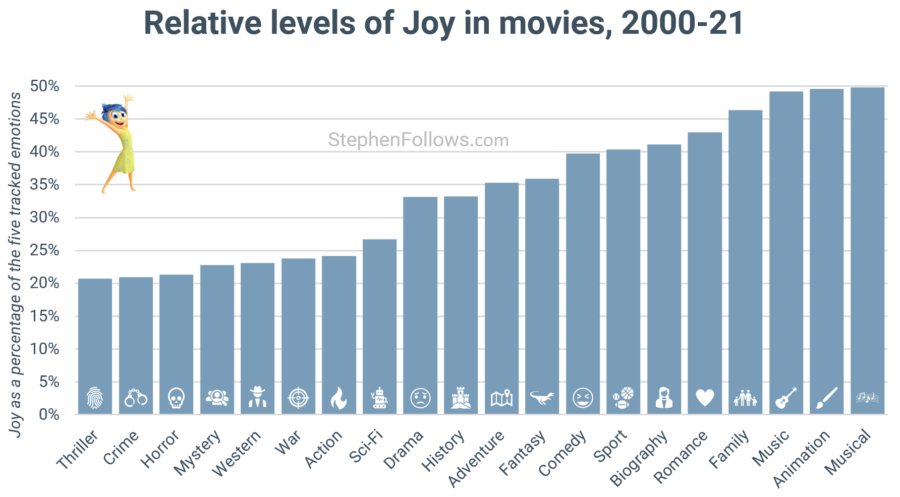
Sadness
Given how most people regard sadness as the inverse of joy, it’s no surprise that we see a largely reversed picture of joy – with the sadness genres being Mystery, Thriller and War films and those will the lowest levels of sadness being present in Animations, Musicals and Family-focused films.
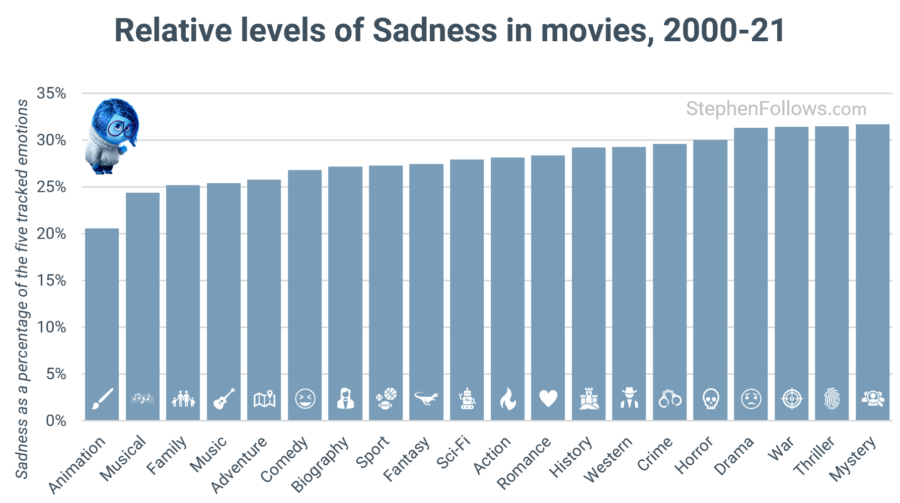
Fear
It will surprise no one that Horror films top the most fear-laden films. However, it is perhaps less well-known just fear-full Sci-Fi movies tend to be on average. They outrank War movies, Mysteries and Thrillers, albeit only slightly. A major driver of tales from our possible futures are warnings of doom if we don’t change our ways.
A respite from these fearful tales can be found in Music-based films, Musicals and Biographies. (Incidentally, my rough rule of thumb when thinking about the line between “Music-based” movies and “Musicals” is if the characters know they’re singing. Typically the former do, while the latter does not).
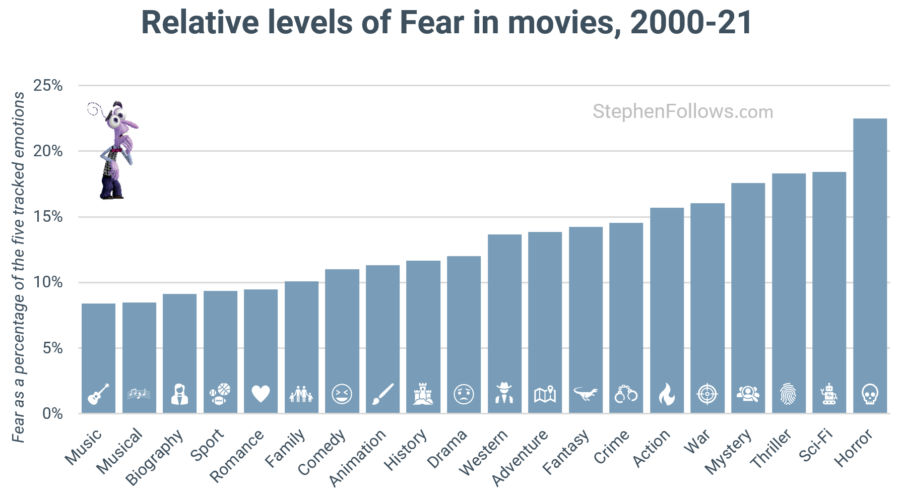
Disgust
The sheer amount of sneering that takes place during your average Western and Crime-based films should have given us a clue as to which genres would top the disgust charts.
Movies based at children and families tend to be the least disgusted (ironic given the increased likelihood of “disgusting” childish humour).
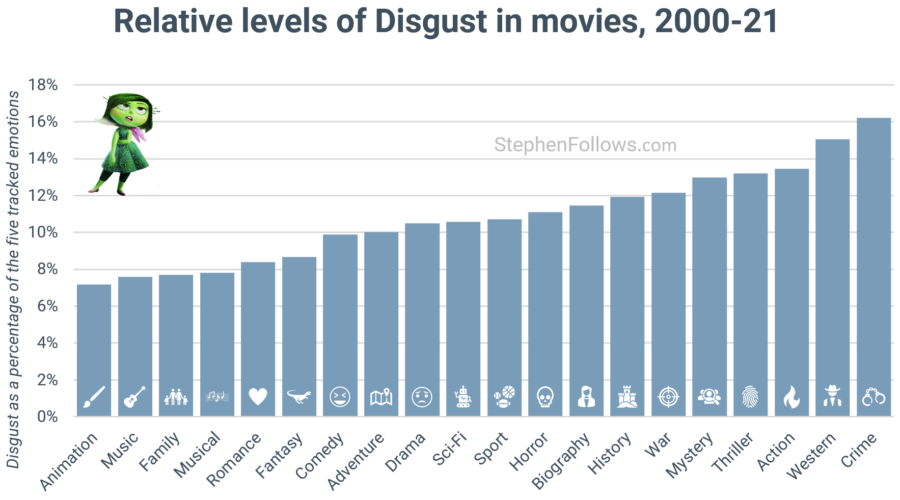
Anger
In our final chart, we descend into anger. We’ll find plenty in Westerns, Crime films and Action movies. The least-disgusting trio of Music-based, Musicals and Family movies are also the least angry.
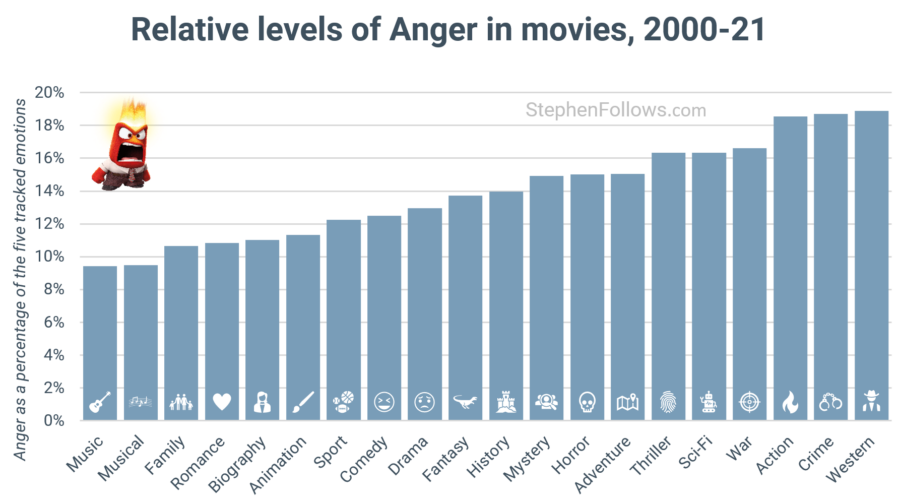
Summary
Overall, the patterns shown above should be largely what you were expecting to see; they are quantifying and illustrating our shared popular culture.
A few things which jumped out as interesting to me are:
- Mystery films have low levels of joy. There is nothing inherent in the notion of a mystery (i.e. a story slowly reveals unknown information) which should preclude a joyful experience – think of a children’s treasure hunt. However, ‘Mystery movies’ typically include elements of distrust, suspicion and threat.
- “Physical” genres dominate anger and disgust, whereas “Metaphysical” films lead with joy and sadness. The movies which lean most heavily on physical on-screen action include Crime, Action, and Westerns. The other end is dominated but metaphysical films (Music and Romance) and genres targeted at children (Animation and Family itself).
- Similar bedfellows don’t always overlap. There is a strong link between anger and disgust in most, but not all genres. The biggest disconnect between these two are found among Sci-Fi, Fantasy and Animation movies.
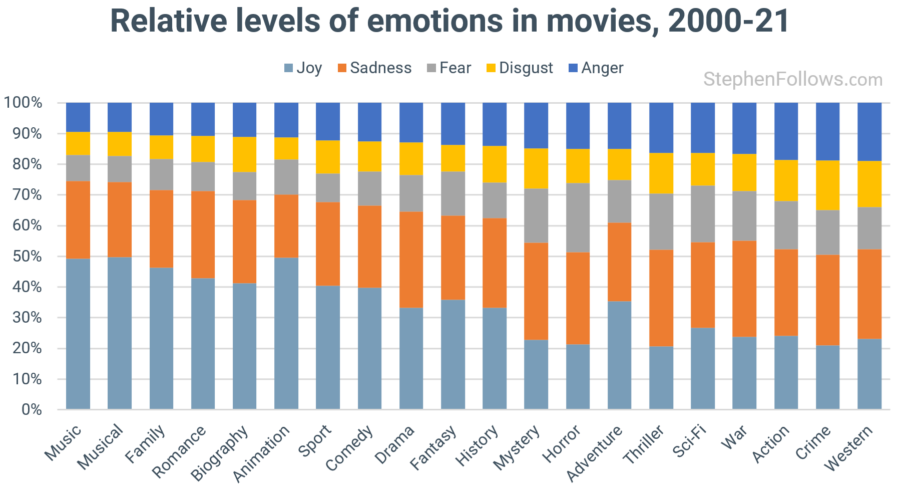
Further reading
If you’ve enjoyed this, then you may want to check out my previous analysis of the emotions found within the human faces on movie posters.
- Using facial recognition to track emotions on movie posters
- Measuring actors’ brands via facial recognition
Methodology
The core dataset of movies came from my own database, built from public sources over the years. The genres and production years were that of IMDb. The emotional data came from Telly Moods, who used IBM Watson NLP to analyse the overview of the movie.
TellyMoods describe itself as “the first product of eClapper Project Inc., a US Data & Emotion company that addresses decision-makers in the entertainment industry; through specific services and products, we help them better understand what the audience wants“.
This is not paid content and TellyMoods had no control over the research, findings or data They provided the raw emotional data, on a per-film basis, and I did the analysis. They read the article ahead of time and shared their notes. I’m very grateful for them reaching out, and for their openness and patience during the process.
Epilogue
At this point I feel it would be worth stating the obvious – this is not a formula for every movie. As with any art form, some of the best examples of movies are ones which surprise and delight us. Countless movies have broken out of their genre’s bounds to make us feel more than we bargained for, including the heart in Die Hard, the loss in Guardians of the Galaxy 2, joy in The Shawshank Redemption, anger in Passengers, humour in The Martian, sadness in WALL-E / Toy Story 3 / Up / …. ok, ok, maybe I should be better prepared for the sadness Pixar constantly deliver.
So if you’re a filmmaker, how should you use this type of data? Not to limit what your movie is or could be.
Instead, consider that this is the landscape of expectations in which your film will be released. This is what people are reasonably expecting to see, and which they may be actively seeking. If you underdeliver on what they think they paid for, they may feel cheated. Know this is how your movie is likely to be sold, and then consider how you sate their needs while still making the movie you want to make.

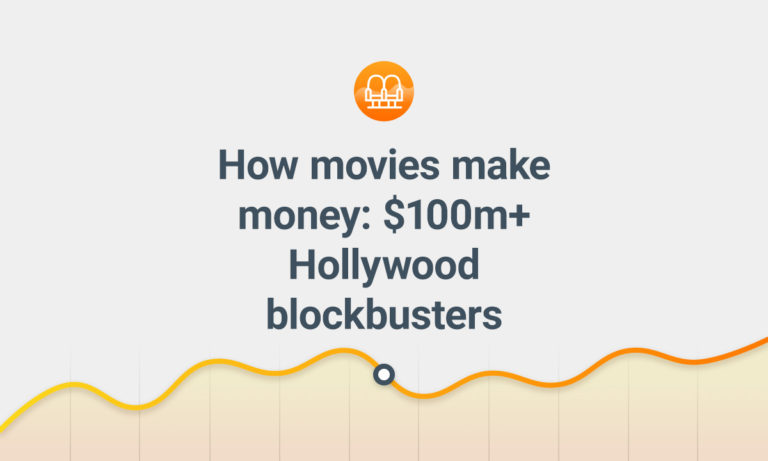

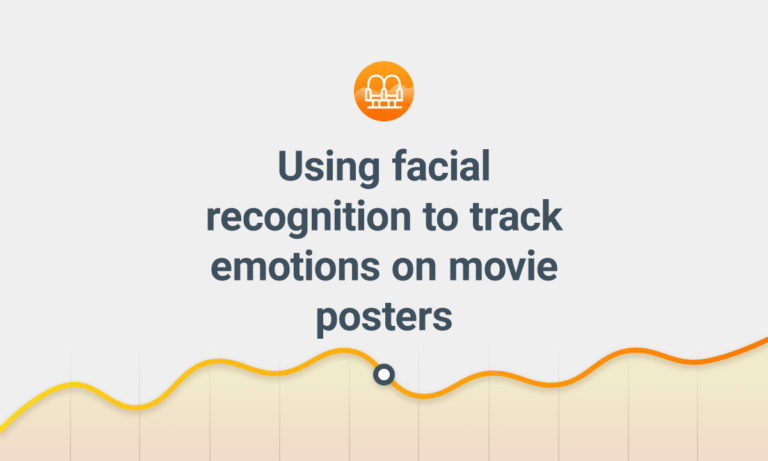

Comments
Excellent analysis, as ever. I think it does highlight how limited conventional genre classifications can be and how classifications that connect films by other attributes (regardless of subject matter) are a better guide.
As often happens with Stephen Follows, these data break new ground.
Perhaps where this heads – and maybe Tellymoods is already there – is a
moment-by-moment analysis of each emotion laid out on a timeline – similar to user likes/dislikes arrayed for any given online post. In theory, this would enable detailed content analysis as a graphical representation of the rises and falls in dramatic/comedic elements over each act and the film as a whole. Excellent!
Excellent research. However, I’d like to know the outcome if the audience wants to ponder or self-reflect instead of focusing on these five human emotions. Perhaps it is time to add a new category.
Thanks Stephen,
Really helpful and I loved the Inside Out avatars that accompanied the graph data. Made me smile while providing me with insight.
Thanks